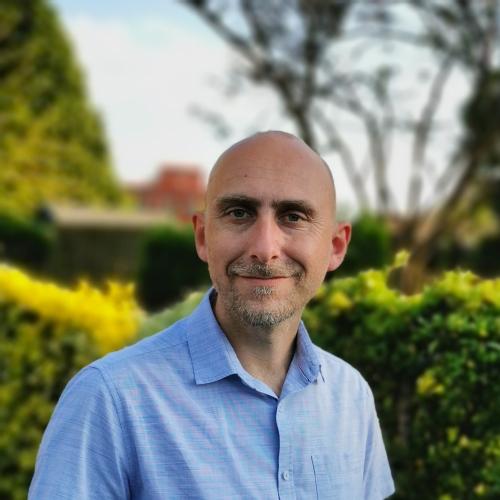box1-content


Dr Samuel Dean
Tel : 024 7615 50196 | Email: Samuel.Dean@warwick.ac.uk
Following a PhD at Edinburgh with Keith Matthews and short postdoc with Achim Schnaufer, I moved to Oxford to work with Keith Gull as a Sir Henry Wellcome Fellow. While in Oxford, I studied different aspects of trypanosome cell and molecular biology. I also developed scalable genetic tools to study trypanosome biology and co-founded TrypTag, a genome-wide protein localisation project. I established my lab at the Warwick Medical School in 2020.
Cilia (also termed flagella) are microtubule-based protrusions of the plasma membrane that are central to many biological processes, including motility, sensing and development. Cilium and flagellum have become interchangeable terms and both have three distinct domains defined by the arrangement of their microtubules: the basal body that is embedded in the cytoplasm, the axoneme that protrudes from the cell body, and the transition zone (TZ) that links the two.
The axonemes of most motile flagella contain a central pair of microtubules that extend from the TZ and are essential for flagellar beating; defects in the central pair cause the human pathologies hydrocephalus and primary ciliary dyskinesia. Further, in recent years the TZ has emerged as central to ciliary function and it is a ‘hotspot’ for many of the proteins and complexes that are implicated in ciliary diseases (ciliopathies), such as retinal and kidney abnormalities.
The flagellum is also central to cell structure and pathogenicity in trypanosomatid parasites. These include African trypanosomes (causes African Sleeping Sickness), American trypanosomes (causes Chagas disease) and Leishmania (causes Leishmaniasis). Motility and flagellum function are critical for the ability of these parasites to spread and cause human and cattle disease.
African trypanosomes have genetic tools and resources that rival that of any model system. This means that trypanosomes are the ideal system to address important and ambitious research questions. My lab uses trypanosomes because of their importance as pathogens and also as a model system for understanding eukaryotic biology. We also use cultured mammalian cells for comparative evolutionary cell biology and because of their relevance to human biology and genetic diseases.
We focus on the function of the TZ in trypanosome and human flagellum biology and use this to increase our understanding of fundamental biology and disease.
Collaborators:
Philippe Bastin (France), Alvaro Acosta Serrano (UK), Jack Sunter (UK), Vladimir Varga (Czech Republic), Sue Vaughan (UK), WACCBIP (Ghana), Richard Wheeler (UK)
Nearly every cell has a protrusion of the cell surface called a cilium. When the cilium ‘beats’, the cell moves forwards (like a sperm cell) or fluid moves across the cell surface (such as when keeping the airways free of mucus). Cilia are also tiny antennae that sense changes outside the cell and are important for human development. Defects in human flagella cause genetic diseases called 'ciliopathies'. Ciliopathies affect many tissues and can cause blindness, deafness, chronic respiratory infections, kidney disease, heart disease, infertility, obesity and diabetes.
The cilium is central to the ability of microscopic ‘trypanosomatid’ parasites to spread and cause disease. Each year they kill 80,000 people and are a major agricultural burden upon developing countries. There is an urgent need for new therapies because no vaccines are available and existing drugs are ineffective and toxic.
Our aim is to use parasites and human cells to understand ciliary function and their role in genetic and infectious disease.
1. Billington K, Halliday C, Madden R, Dyer P, Barker AR, Moreira-Leite FF, Carrington M, Vaughan S, Hertz-Fowler C, Dean S, Sunter JD, Wheeler RJ, Gull K. 2023. Genome-wide subcellular protein map for the flagellate parasite Trypanosoma brucei. Nature Microbiology. DOI: 10.1038/s41564-022-01295-6Link opens in a new window
2. Dean, S., Moreira-Leite, F., and Gull, K (2019) Basalin is an evolutionarily unconstrained protein revealed via a conserved role in flagellum basal plate function. eLife DOI: 10.7554/eLife.42282
3. Dean, S., Sunter, J. and Wheeler, S. (2016) TrypTag.org: Genome-wide protein localisation in the trypanosome. Trends in Parasitology 33(2), 80-82. DOI: 10.1016/j.pt.2016.10.009
4. Dean, S., Moreira-Leite, F., Varga, V. and Gull, K. (2016) Cilium transition zone proteome reveals compartmentalisation and differential dynamics of ciliopathy complexes. Proc Natl Acad Sci USA 113(35) E5135-E5143. DOI: 10.1073/pnas.1604258113
5. Dean, S., Gould, M., Dewar, C. and Schnaufer, A. (2013) Single point mutations in ATP synthase compensate for mitochondrial genome loss in trypanosomes. Proc Natl Acad Sci USA 110(36):14741-6. DOI: 10.1073/pnas.1305404110
6. Dean S., Marchetti R., Kirk K. and Matthews K. (2009) A surface transporter family conveys the differentiation signal in African trypanosomes. Nature 459:213-217. DOI: 10.1038/nature07997